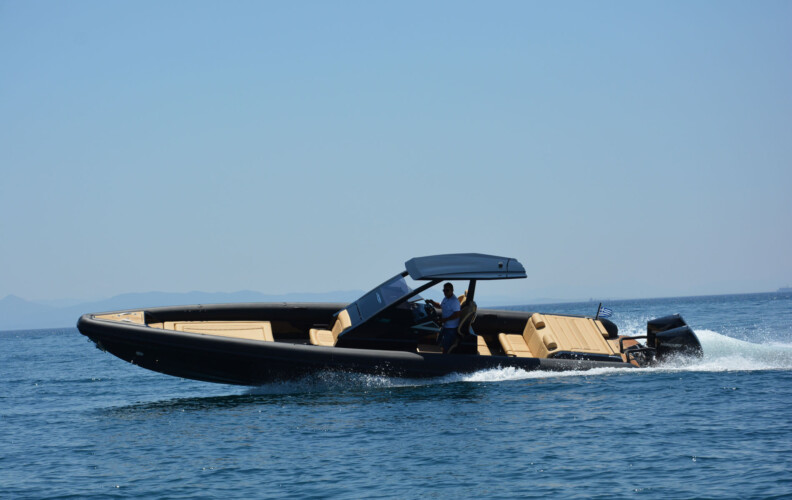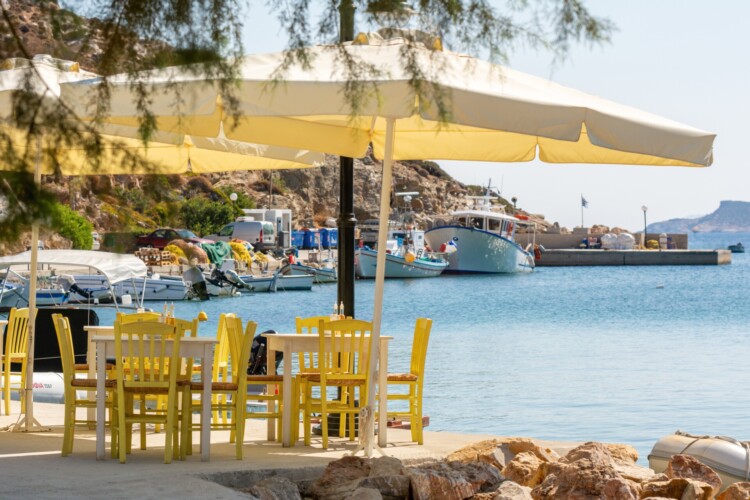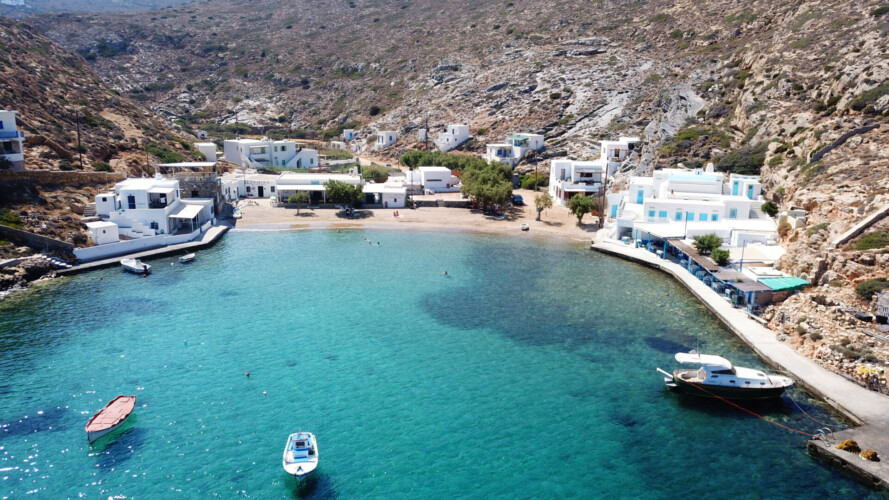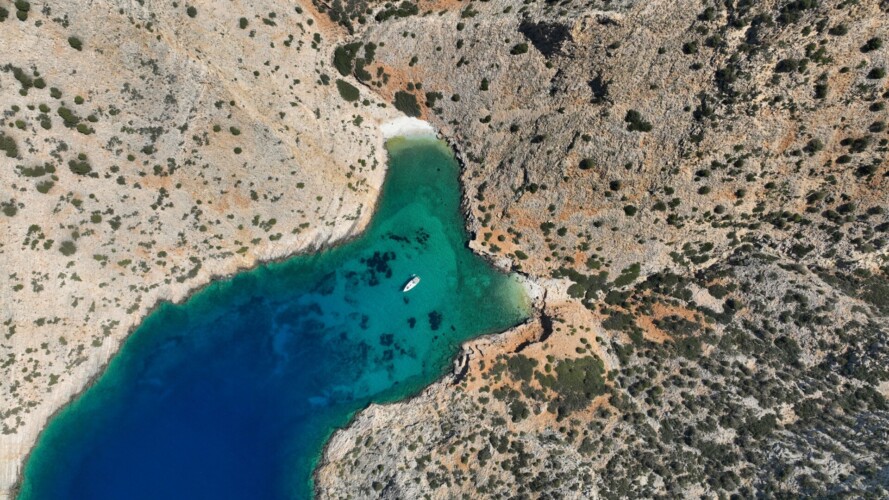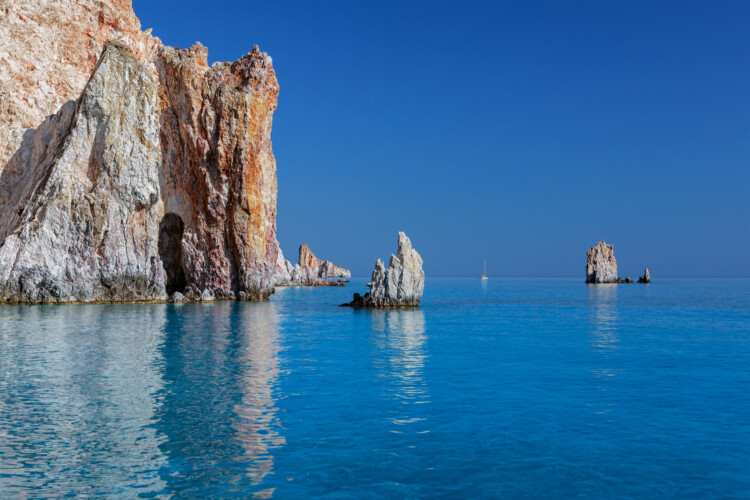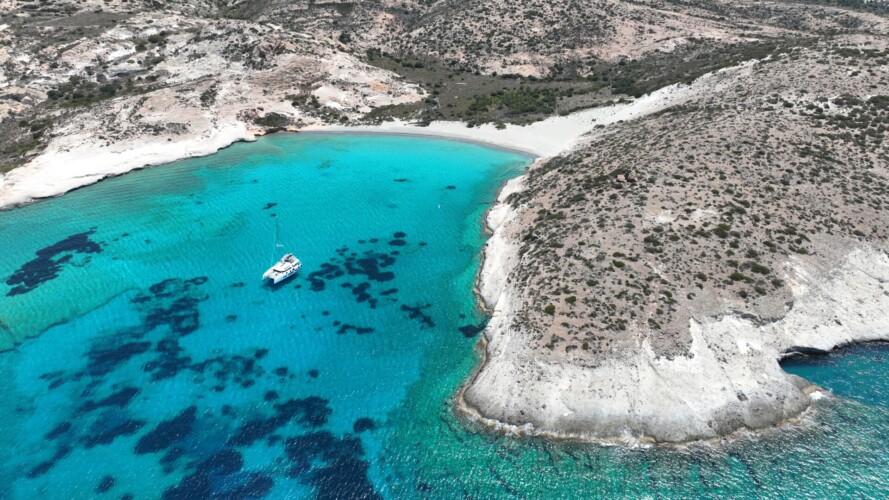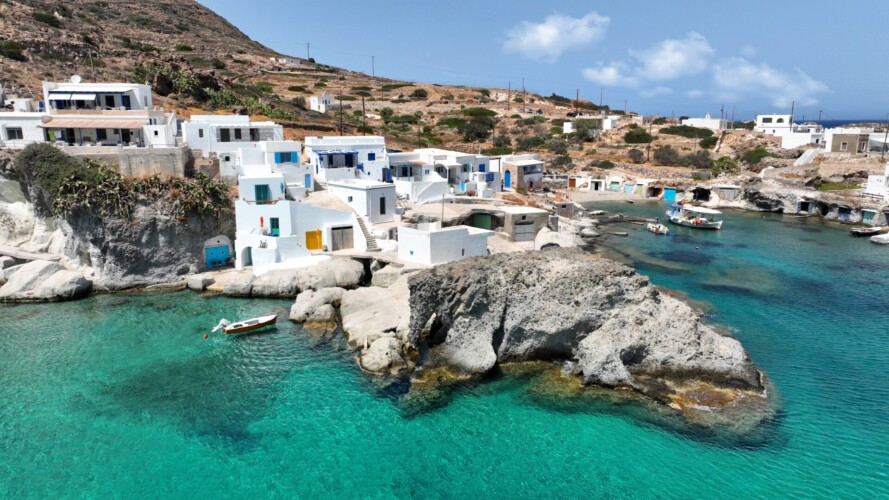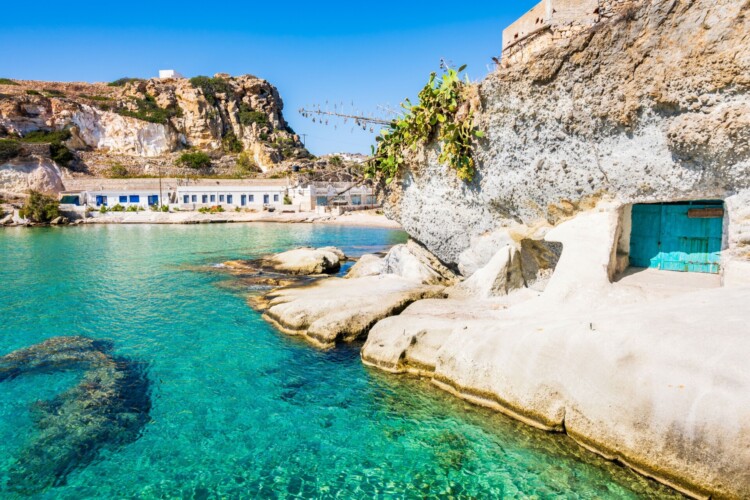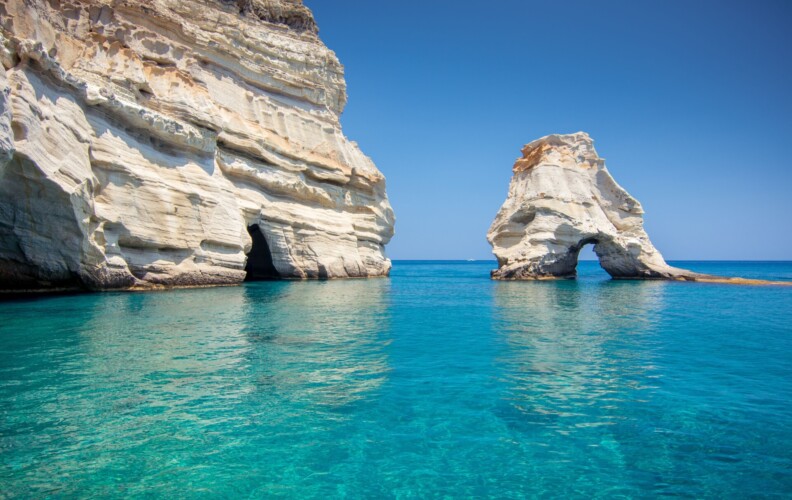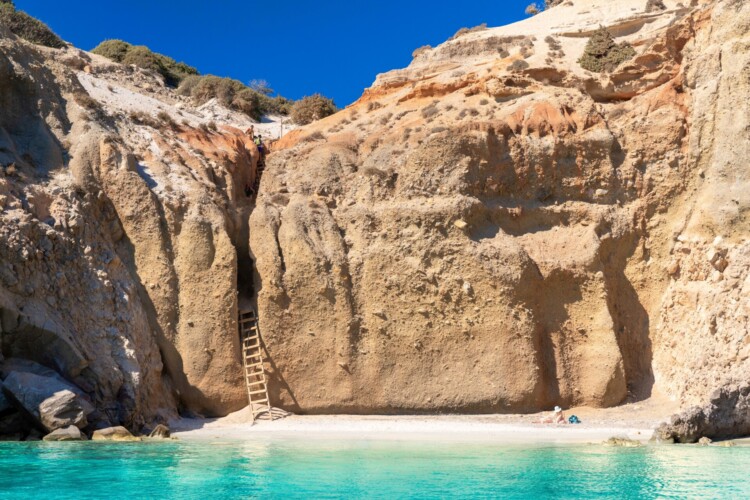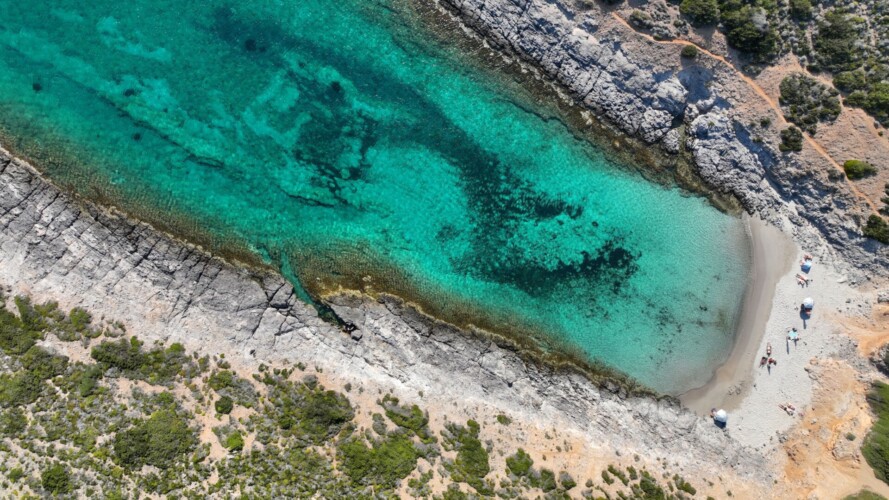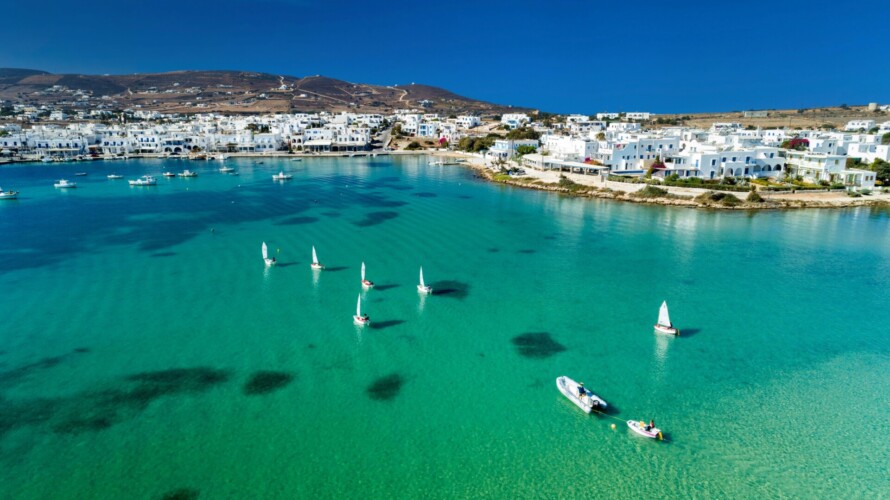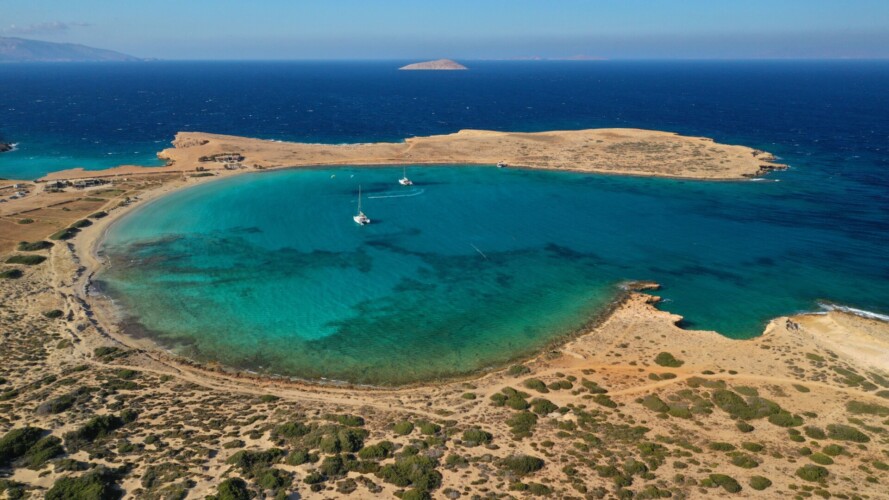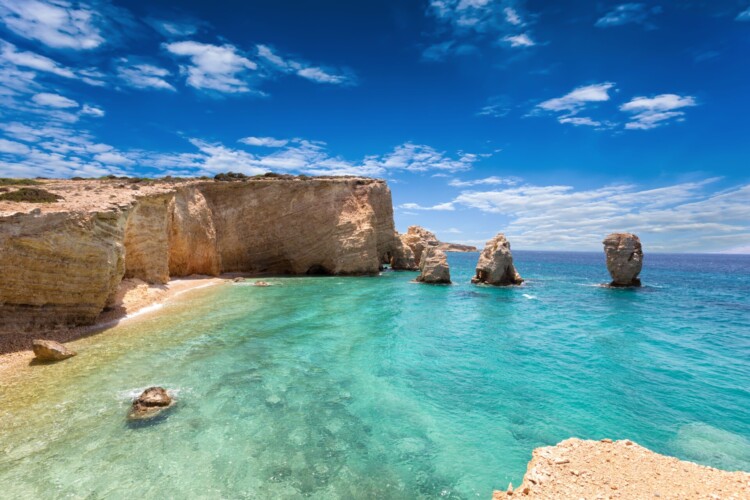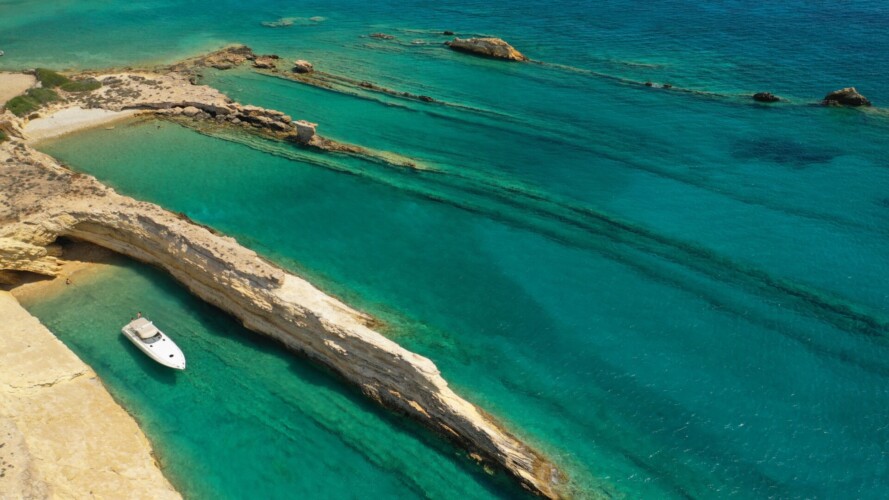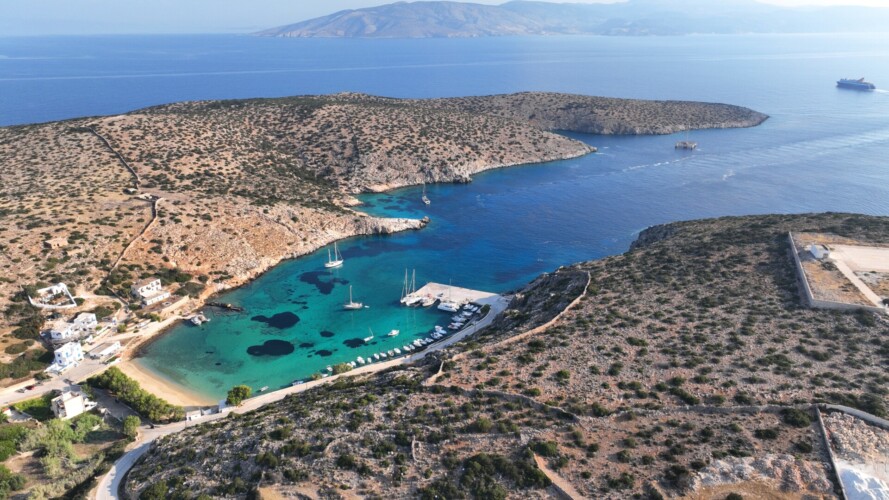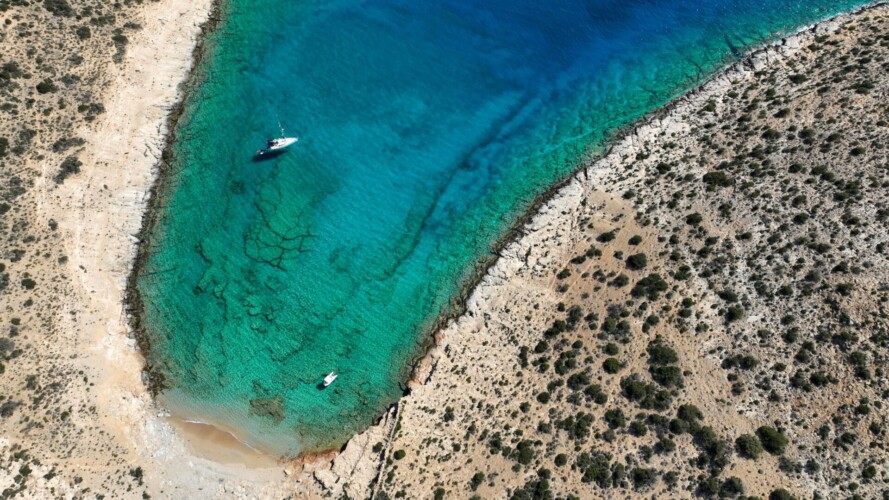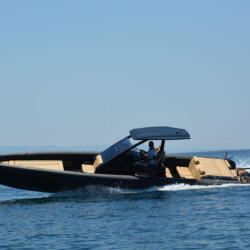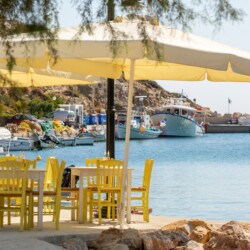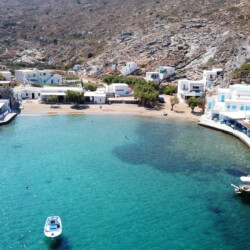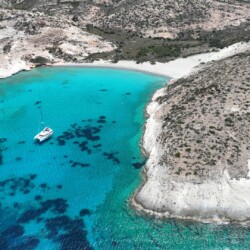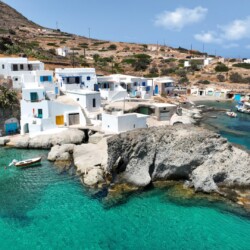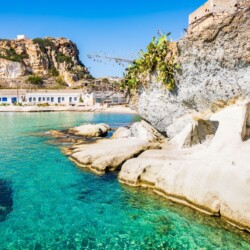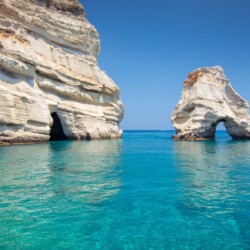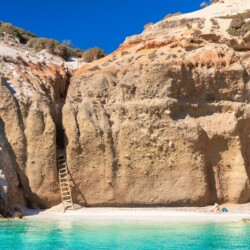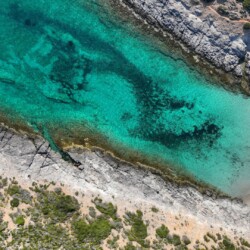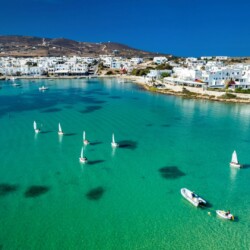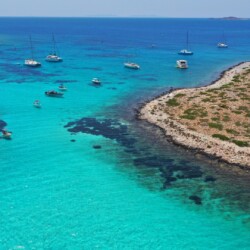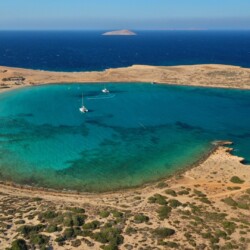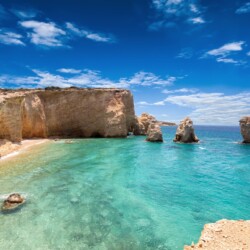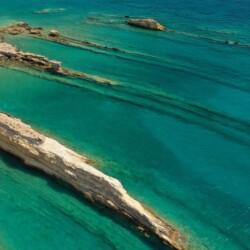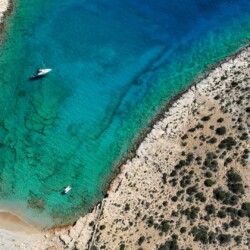Sifnos Daily Trips Experience
Faros, Sifnos Island GreeceBoat Type
Rib Boat / Daily Trip
Capacity
9 Passengers
With Skipper

Trips’ Descriptions:
Sifnos Blast
A compact cruise experience that showcases the best of the island’s southwest coast. With a couple of swimming stops and extra fun.
Sifnos is an island where tradition meets charm — a place of rich flavors, age-old customs, and timeless villages. Scattered with whitewashed chapels and inviting beaches with crystal-clear waters, Sifnos offers a laid-back rhythm that invites you to slow down and explore. Nested in the southwestern Cyclades, it’s renowned for its distinctive architecture, mouthwatering local cuisine, celebrated pottery and ceramic artistry, and a vibrant summer nightlife that brings the island to life after sunset.
Itinerary – Optional Stops for Swimming & Lunch:
• Kitriani Island – Gialia Cove: a rocky uninhabited island with the church of Panagia Kitriani being the only building on the islet.
• Fikiada Beach: Small with golden soft sand and clear blue water it can only be reached by boat or by walking. The beach is totally isolated and the only structure is the small chapel of Agios Georgios (St. George).
• Vlichada Beach: A secluded beach that offers a peaceful retreat for visitors seeking tranquility. It features pebbles mixed with sand, clear emerald waters that deepen gradually, and it is shaded by tamarisk trees on one side.
Lunch Stop Options:
• Platis Gialos: The cosmopolitan beach of Sifnos, you will find taverns and restaurants with tables by the sea serving Mediterranean cuisine with fresh local ingredients, international flavors & modern dishes.
• Vathi Bay: A charming seaside village nestled around a naturally sheltered, almost enclosed bay. It is the native village of many ceramicists.
Sifnos is an island where tradition meets charm — a place of rich flavors, age-old customs, and timeless villages. Scattered with whitewashed chapels and inviting beaches with crystal-clear waters, Sifnos offers a laid-back rhythm that invites you to slow down and explore. Nested in the southwestern Cyclades, it’s renowned for its distinctive architecture, mouthwatering local cuisine, celebrated pottery and ceramic artistry, and a vibrant summer nightlife that brings the island to life after sunset.
Itinerary – Optional Stops for Swimming & Lunch:
• Kitriani Island – Gialia Cove: a rocky uninhabited island with the church of Panagia Kitriani being the only building on the islet.
• Fikiada Beach: Small with golden soft sand and clear blue water it can only be reached by boat or by walking. The beach is totally isolated and the only structure is the small chapel of Agios Georgios (St. George).
• Vlichada Beach: A secluded beach that offers a peaceful retreat for visitors seeking tranquility. It features pebbles mixed with sand, clear emerald waters that deepen gradually, and it is shaded by tamarisk trees on one side.
Lunch Stop Options:
• Platis Gialos: The cosmopolitan beach of Sifnos, you will find taverns and restaurants with tables by the sea serving Mediterranean cuisine with fresh local ingredients, international flavors & modern dishes.
• Vathi Bay: A charming seaside village nestled around a naturally sheltered, almost enclosed bay. It is the native village of many ceramicists.
Sifnos Expedition Coastline
Sifnos is an island where tradition meets charm — a place of rich flavors, age-old customs, and timeless villages. Scattered with whitewashed chapels and inviting beaches with crystal-clear waters, Sifnos offers a laid-back rhythm that invites you to slow down and explore. Nested in the southwestern Cyclades, it’s renowned for its distinctive architecture, mouthwatering local cuisine, celebrated pottery and ceramic artistry, and a vibrant summer nightlife that brings the island to life after sunset.
Itinerary – Optional Stops for Swimming & Lunch:
• Kitriani Island – Gialia Cove: a rocky uninhabited island with the church of Panagia Kitriani being the only building on the islet.
• Fikiada Beach: Small with golden soft sand and clear blue water it can only be reached by boat or by walking. The beach is totally isolated and the only structure is the small chapel of Agios Georgios (St. George).
• Vlichada Beach: A secluded beach that offers a peaceful retreat for visitors seeking tranquility. It features pebbles mixed with sand, clear emerald waters that deepen gradually, and it is shaded by tamarisk trees on one side.
• Gialoudia Beach: A quiet, tucked-away beach with stunning turquoise waters.
• Vroulidia Beach: It boasts sunbeds and umbrellas that are available to rent. On the beach’s edge, you can enjoy a coffee with sea-view tables. Despite these amenities, visitors can expect a highly serene atmosphere.
Lunch Stop Options:
• Platis Gialos: The cosmopolitan beach of Sifnos, you will find taverns and restaurants with tables by the sea serving Mediterranean cuisine with fresh local ingredients, international flavors & modern dishes.
• Vathi Bay: A charming seaside village nestled around a naturally sheltered, almost enclosed bay. It is the native village of many ceramicists. A beautiful little harbor with excellent and inexpensive restaurants.
• Vroulidia Beach: A nice fish tavern near the beach offers excellent Greek specialties, with inviting shady spots to rest and escape the sun.
• Cherronisos: The island’s northernmost village, a charming traditional fishing community with a small beach within a picturesque cove. Enjoy delicious Greek specialties and chilled drinks at the taverns right on the sandy shore.
Itinerary – Optional Stops for Swimming & Lunch:
• Kitriani Island – Gialia Cove: a rocky uninhabited island with the church of Panagia Kitriani being the only building on the islet.
• Fikiada Beach: Small with golden soft sand and clear blue water it can only be reached by boat or by walking. The beach is totally isolated and the only structure is the small chapel of Agios Georgios (St. George).
• Vlichada Beach: A secluded beach that offers a peaceful retreat for visitors seeking tranquility. It features pebbles mixed with sand, clear emerald waters that deepen gradually, and it is shaded by tamarisk trees on one side.
• Gialoudia Beach: A quiet, tucked-away beach with stunning turquoise waters.
• Vroulidia Beach: It boasts sunbeds and umbrellas that are available to rent. On the beach’s edge, you can enjoy a coffee with sea-view tables. Despite these amenities, visitors can expect a highly serene atmosphere.
Lunch Stop Options:
• Platis Gialos: The cosmopolitan beach of Sifnos, you will find taverns and restaurants with tables by the sea serving Mediterranean cuisine with fresh local ingredients, international flavors & modern dishes.
• Vathi Bay: A charming seaside village nestled around a naturally sheltered, almost enclosed bay. It is the native village of many ceramicists. A beautiful little harbor with excellent and inexpensive restaurants.
• Vroulidia Beach: A nice fish tavern near the beach offers excellent Greek specialties, with inviting shady spots to rest and escape the sun.
• Cherronisos: The island’s northernmost village, a charming traditional fishing community with a small beach within a picturesque cove. Enjoy delicious Greek specialties and chilled drinks at the taverns right on the sandy shore.
Poliegos and Kimolos Islands
Poliegos Island: The largest uninhabited island of the Aegean. Its name means “many goats”, since it is inhabited only by goats. The island is uninhabited, so there are few man-made sights, but the natural beauty is truly worth seeing. It has been declared as an area of outstanding beauty and an important habitat for the Mediterranean Monk Seal (Monachus-Monachus).
Kimolos Island: This small but stunning island is located in the western Cyclades, just next to Milos. With volcanic soil rich in unique minerals, the island’s name is derived from its chalk mining history, as “kimolia” means “chalk” in Greek. The island shares a striking resemblance to the other Cycladic islands, with its whitewashed houses, cobblestone streets, and breathtaking beaches.
Itinerary – Optional Stops for Swimming & Lunch:
Poliegos
• Fanara Cave: A cave with an open roof, naturally carved into the volcanic rock. The interplay of sunlight and the crystal-clear water creates vibrant, colorful reflections.
• Ammoura Beach: Which has a path leading up to a historical lighthouse with a magical 360-degree view. Just be prepared for a hike of 20 minutes.
• Blue Bay: Blue Bay is heaven on earth, with astonishing turquoise waters and soft white sand. Framed by towering white limestone cliffs, this narrow bay feels like a natural swimming pool, with crystal-clear water so transparent you can see the seabed even at great depths. Whether you’re swimming, snorkeling, or simply floating, it’s a place that feels utterly magical.
• Pano and Kato (Upper and Lower) Mersini: Located closest to Kimolos, is the most popular beach on Poliegos. With its soft white sand, tranquil turquoise waters, and a striking rocky backdrop, it’s one of the island’s top spots for a relaxing swim.
Kimolos
• Rema Beach: Few amenities are available, no facilities, beach bars, sunbeds, or umbrellas exist. At the tip of the cove stands a rock resembling an elephant—an incredible natural sculpture that adds a unique touch to the beach.
• Prasa Beach: Described from many as the best beach on the island of Kimolos when it comes to scenery. Close by, one can find the quarries where chalk is being excavated. The white color of the chalk gives the waters of Prasa beautiful shades of blue and turquoise.
• Soufi Beach: When there is a northern wind blowing, Soufi beach is a very good choice because it is completely protected. It is a non-organized beach, so one can enjoy the quiet and beautiful natural surroundings.
Lunch Stop:
• Kimolos Psathi Port: A lovely village, home to the island’s port, with white houses, narrow alleys lined with flowerpots and small houses to store locals’ boats. A great place to enjoy your lunch by the sea.
Kimolos Island: This small but stunning island is located in the western Cyclades, just next to Milos. With volcanic soil rich in unique minerals, the island’s name is derived from its chalk mining history, as “kimolia” means “chalk” in Greek. The island shares a striking resemblance to the other Cycladic islands, with its whitewashed houses, cobblestone streets, and breathtaking beaches.
Itinerary – Optional Stops for Swimming & Lunch:
Poliegos
• Fanara Cave: A cave with an open roof, naturally carved into the volcanic rock. The interplay of sunlight and the crystal-clear water creates vibrant, colorful reflections.
• Ammoura Beach: Which has a path leading up to a historical lighthouse with a magical 360-degree view. Just be prepared for a hike of 20 minutes.
• Blue Bay: Blue Bay is heaven on earth, with astonishing turquoise waters and soft white sand. Framed by towering white limestone cliffs, this narrow bay feels like a natural swimming pool, with crystal-clear water so transparent you can see the seabed even at great depths. Whether you’re swimming, snorkeling, or simply floating, it’s a place that feels utterly magical.
• Pano and Kato (Upper and Lower) Mersini: Located closest to Kimolos, is the most popular beach on Poliegos. With its soft white sand, tranquil turquoise waters, and a striking rocky backdrop, it’s one of the island’s top spots for a relaxing swim.
Kimolos
• Rema Beach: Few amenities are available, no facilities, beach bars, sunbeds, or umbrellas exist. At the tip of the cove stands a rock resembling an elephant—an incredible natural sculpture that adds a unique touch to the beach.
• Prasa Beach: Described from many as the best beach on the island of Kimolos when it comes to scenery. Close by, one can find the quarries where chalk is being excavated. The white color of the chalk gives the waters of Prasa beautiful shades of blue and turquoise.
• Soufi Beach: When there is a northern wind blowing, Soufi beach is a very good choice because it is completely protected. It is a non-organized beach, so one can enjoy the quiet and beautiful natural surroundings.
Lunch Stop:
• Kimolos Psathi Port: A lovely village, home to the island’s port, with white houses, narrow alleys lined with flowerpots and small houses to store locals’ boats. A great place to enjoy your lunch by the sea.
Poliegos, Milos and Kimolos Islands
Poliegos Island: The largest uninhabited island of the Aegean. Its name means “many goats”, since it is inhabited only by goats. The island is uninhabited, so there are few man-made sights, but the natural beauty is truly worth seeing. It has been declared as an area of outstanding beauty and an important habitat for the Mediterranean Monk Seal (Monachus-Monachus).
Milos Island: One of the most captivating islands to explore, especially for its diverse and jaw-dropping landscapes. The island showcases a stunning palette of colors and a coastline dotted with over 40 exotic beaches, each offering its own unique charm. Milos’ mineral wealthy land is home to one of the oldest mines in the Mediterranean and it is also the homeland of the renowned marble statue of Venus of Milo seen today in the Louvre Museum
Kimolos Island: This small but stunning island is located in the western Cyclades, just next to Milos. With volcanic soil rich in unique minerals, the island’s name is derived from its chalk mining history, as “kimolia” means “chalk” in Greek. The island shares a striking resemblance to the other Cycladic islands, with its whitewashed houses, cobblestone streets, and breathtaking beaches.
Itinerary – Optional Stops for Swimming:
Poliegos
• Ammoura Beach: Which has a path leading up to a historical lighthouse with a magical 360-degree view. Just be prepared for a hike of 20 minutes.
• Blue Bay: Blue Bay is heaven on earth, with astonishing turquoise waters and soft white sand. Framed by towering white limestone cliffs, this narrow bay feels like a natural swimming pool, with crystal-clear water so transparent you can see the seabed even at great depths. Whether you’re swimming, snorkeling, or simply floating, it’s a place that feels utterly magical.
Milos
• Gerakas Beach: Tucked beneath dramatic cliffs sculpted by ancient volcanic forces, Gerakas Beach offers dazzling white sand and translucent waters — a secluded gem reachable only by sea. A striking natural phenomenon unfolds here, where golden sand appears to cascade down the hillsides like giant slides.
• Kleftiko: One of the island’s highlights and most visited spots! Kleftiko is an impressive seascape of towering volcanic rocks, sculpted over millennia by wind and waves into a series of hidden bays and sea caves beckoning exploration — either by boat or with a swim. These crystal-clear waters are perfect for snorkeling, revealing an underwater world as spectacular as the cliffs above. Once a hideout for pirates, the area’s natural inlets provided the perfect cover for ambushes and protection from storms. Fittingly, its name comes from the Greek word kleftiko, meaning “bandit’s lair.
• Tsigrado Beach: The beach is famous for its way to reach it, following a rough, rocky passage, followed by two massively-sized ladders that end up on the beach, while you can also help yourself down and up the ladders with the use of a large rope. It is secluded but beautiful and hidden away among rocky cliffs and caverns.
Kimolos
• Prasa Beach: Described from many as the best beach on the island of Kimolos when it comes to scenery. Close by, one can find the quarries where chalk is being excavated. The white color of the chalk gives the waters of Prasa beautiful shades of blue and turquoise.
Lunch Stop:
• Kimolos Psathi Port: A lovely village, home to the island’s port, with white houses, narrow alleys lined with flowerpots and small houses to store locals’ boats. A great place to enjoy your lunch by the sea.
Milos Island: One of the most captivating islands to explore, especially for its diverse and jaw-dropping landscapes. The island showcases a stunning palette of colors and a coastline dotted with over 40 exotic beaches, each offering its own unique charm. Milos’ mineral wealthy land is home to one of the oldest mines in the Mediterranean and it is also the homeland of the renowned marble statue of Venus of Milo seen today in the Louvre Museum
Kimolos Island: This small but stunning island is located in the western Cyclades, just next to Milos. With volcanic soil rich in unique minerals, the island’s name is derived from its chalk mining history, as “kimolia” means “chalk” in Greek. The island shares a striking resemblance to the other Cycladic islands, with its whitewashed houses, cobblestone streets, and breathtaking beaches.
Itinerary – Optional Stops for Swimming:
Poliegos
• Ammoura Beach: Which has a path leading up to a historical lighthouse with a magical 360-degree view. Just be prepared for a hike of 20 minutes.
• Blue Bay: Blue Bay is heaven on earth, with astonishing turquoise waters and soft white sand. Framed by towering white limestone cliffs, this narrow bay feels like a natural swimming pool, with crystal-clear water so transparent you can see the seabed even at great depths. Whether you’re swimming, snorkeling, or simply floating, it’s a place that feels utterly magical.
Milos
• Gerakas Beach: Tucked beneath dramatic cliffs sculpted by ancient volcanic forces, Gerakas Beach offers dazzling white sand and translucent waters — a secluded gem reachable only by sea. A striking natural phenomenon unfolds here, where golden sand appears to cascade down the hillsides like giant slides.
• Kleftiko: One of the island’s highlights and most visited spots! Kleftiko is an impressive seascape of towering volcanic rocks, sculpted over millennia by wind and waves into a series of hidden bays and sea caves beckoning exploration — either by boat or with a swim. These crystal-clear waters are perfect for snorkeling, revealing an underwater world as spectacular as the cliffs above. Once a hideout for pirates, the area’s natural inlets provided the perfect cover for ambushes and protection from storms. Fittingly, its name comes from the Greek word kleftiko, meaning “bandit’s lair.
• Tsigrado Beach: The beach is famous for its way to reach it, following a rough, rocky passage, followed by two massively-sized ladders that end up on the beach, while you can also help yourself down and up the ladders with the use of a large rope. It is secluded but beautiful and hidden away among rocky cliffs and caverns.
Kimolos
• Prasa Beach: Described from many as the best beach on the island of Kimolos when it comes to scenery. Close by, one can find the quarries where chalk is being excavated. The white color of the chalk gives the waters of Prasa beautiful shades of blue and turquoise.
Lunch Stop:
• Kimolos Psathi Port: A lovely village, home to the island’s port, with white houses, narrow alleys lined with flowerpots and small houses to store locals’ boats. A great place to enjoy your lunch by the sea.
Antiparos and Paros Islands
Antiparos Island: The small island, situated just a stone’s throw from Paros, has become known for its tranquility, sandy beaches, and gentle landscape. It is known for its white houses, cobbled streets and the flowers that thrive in the yards of the houses. The historical center is located in the Venetian castle of Antiparos, which is connected through the shopping streets in the picturesque coastal street. Despite being so close to Paros island, Antiparos is not so crowded but it has a cosmopolitan character. An idyllic Greek island where you can kick back and enjoy a stress-free, peaceful retreat.
Paros Island: It is one of the most popular holiday destinations in Greece, mainly known for its traditional Cycladic architecture and enchanting sandy beaches with transparent waters. In antiquity, Paros was famous for its white marble quarries, the so-called ‘Parian marble’ was highly sought-after for its top quality, for use in architecture and sculpture. Some of the best-known sculptors, painters and poets of ancient Greece come from Paros.
Itinerary – Optional Stops for Swimming:
• Despotiko Island: Nowadays a small and uninhabited island that was heavily populated in ancient times. The only inhabitant of the island since ancient times was a goat shepherd who had to leave the island and his home because it was placed on top of the ancient sanctuary. The island offers great sandy, non-organized beaches such as Livadi & Despotiko beach.
• Epitafios beach: A wonderful sandy beach with emerald waters is hidden behind the cave. It is located at the southern part of the Antiparos island and it is accessible only by boat. The experience is unique, since the beach is surrounded by towering white vertical rocks, turquoise waters and sea caves.
• Faneromeni Beach: A small beach nestled in a small bay, featuring unique geological formations. It’s the perfect spot for diving, tranquility, and relaxation. The shore is lined with fine pebbles and small stones, and offers an unspoiled, quiet atmosphere, though there is no shade or organized facilities.
• Sostis Beach: Extremely transparent water in light and dark blue. Soft sand around the shore and shallow water.
• Panteronisia: A lagoon with turquoise sea water, formed by the small islands of Tigani, Panteronisi & Glaropounda. Known locally as the ‘Blue Lagoon’ because of its crystal clear waters! Also considered as the “Caribbean” of the Aegean.
• Faragkas Beach in Paros: A lovely, large beach boasting crystal waters and fine sand, protected from the wind.
Lunch Stop Options:
• Antiparos Port: Places to eat and drink in Antiparos are mostly concentrated in Chora, the main town of the island. The island is famous for its delicious cuisine, fresh products and unique recipes.
• Aliki in Paros: A beautiful coastal village with a picturesque port, fish taverns and overall tranquil ambiance. The locals stand out for their kindness and hospitality. They take great care of food lovers, and as a result, you will be greatly satisfied with the traditional taverns and restaurants whose owners grow their own vegetables and go fishing in order to offer you dishes of the highest quality possible.
Paros Island: It is one of the most popular holiday destinations in Greece, mainly known for its traditional Cycladic architecture and enchanting sandy beaches with transparent waters. In antiquity, Paros was famous for its white marble quarries, the so-called ‘Parian marble’ was highly sought-after for its top quality, for use in architecture and sculpture. Some of the best-known sculptors, painters and poets of ancient Greece come from Paros.
Itinerary – Optional Stops for Swimming:
• Despotiko Island: Nowadays a small and uninhabited island that was heavily populated in ancient times. The only inhabitant of the island since ancient times was a goat shepherd who had to leave the island and his home because it was placed on top of the ancient sanctuary. The island offers great sandy, non-organized beaches such as Livadi & Despotiko beach.
• Epitafios beach: A wonderful sandy beach with emerald waters is hidden behind the cave. It is located at the southern part of the Antiparos island and it is accessible only by boat. The experience is unique, since the beach is surrounded by towering white vertical rocks, turquoise waters and sea caves.
• Faneromeni Beach: A small beach nestled in a small bay, featuring unique geological formations. It’s the perfect spot for diving, tranquility, and relaxation. The shore is lined with fine pebbles and small stones, and offers an unspoiled, quiet atmosphere, though there is no shade or organized facilities.
• Sostis Beach: Extremely transparent water in light and dark blue. Soft sand around the shore and shallow water.
• Panteronisia: A lagoon with turquoise sea water, formed by the small islands of Tigani, Panteronisi & Glaropounda. Known locally as the ‘Blue Lagoon’ because of its crystal clear waters! Also considered as the “Caribbean” of the Aegean.
• Faragkas Beach in Paros: A lovely, large beach boasting crystal waters and fine sand, protected from the wind.
Lunch Stop Options:
• Antiparos Port: Places to eat and drink in Antiparos are mostly concentrated in Chora, the main town of the island. The island is famous for its delicious cuisine, fresh products and unique recipes.
• Aliki in Paros: A beautiful coastal village with a picturesque port, fish taverns and overall tranquil ambiance. The locals stand out for their kindness and hospitality. They take great care of food lovers, and as a result, you will be greatly satisfied with the traditional taverns and restaurants whose owners grow their own vegetables and go fishing in order to offer you dishes of the highest quality possible.
Lesser Cyclades
You may see them referred to as the Small, Little, Minor or Lesser Cyclades. These are among Greece’s smallest inhabited islands – their permanent populations number only a couple of hundred. Comprises 32 islands and rocks, the main islands are Ano Koufonisi, Irakleia, Schoinoussa & Donousa.
Itinerary – Optional Stops for Swimming:
Iraklia, the most mountainous. This island is the westernmost of the Small Cyclades, and it’s also the hilliest, dominated by Mount Papa.
• Alimia Beach: a sandy beach with majestic blue waters. This beach is a special and ideal place for snorkeling due to a German plane from World War II that lies underwater in front of the coast.
• Vorini Beach: A lovely beach on the northern coast.
Schinoussa, the wildest. A bit off the beaten path and free from mass tourism, Schinoussa is the perfect hidden gem for those seeking an untouched natural landscape. With minimal tourist facilities and unorganized, exotic beaches, it’s an ideal spot for travelers looking for a more authentic and alternative getaway.
• Psili Ammos: An unspoilt paradise shaded by giant tamarisks.
Koufonisia is a set of 2 islands, Ano Koufonisi is the lively one, where hotels, restaurants, bars and sights are located. It owes its name to its sea caves (koufos means “hollow” in English) that enrapture divers, and its natural swimming pools. Kato Koufonisi on the contrary, is an uninhabited islet.
• Detis Beach, Kato Koufonisi: Stretching in the heart of a lovely cove, covered with a combination of coarse sand and fine pebbles, it boasts dazzling turquoise waters, impressive rock formations and a small cave. Another perfect spot for snorkeling.
• Pori Beach, Ano Koufonisi: Pori curves around a charming crescent-shaped bay. Scattered with fine golden sand, it boasts crystalline waters that take on incredible turquoise and dark blue hues.
Lunch Stop Options:
• Pori Beach, Ano Koufonisi: Seaside taverns that serve delicious seafood and other local delicacies.
• Ano Koufonisi Port: Sprawling around Koufonisia Port, the picturesque Chora is the capital and the island’s only settlement. Its maze of narrow cobblestone alleys is lined with whitewashed houses, each adorned with blooming bougainvilleas and blue-painted doors and windows. Several taverns and coffee shops, where visitors can unwind, sipping a refreshing drink or savoring local delicacies.
Itinerary – Optional Stops for Swimming:
Iraklia, the most mountainous. This island is the westernmost of the Small Cyclades, and it’s also the hilliest, dominated by Mount Papa.
• Alimia Beach: a sandy beach with majestic blue waters. This beach is a special and ideal place for snorkeling due to a German plane from World War II that lies underwater in front of the coast.
• Vorini Beach: A lovely beach on the northern coast.
Schinoussa, the wildest. A bit off the beaten path and free from mass tourism, Schinoussa is the perfect hidden gem for those seeking an untouched natural landscape. With minimal tourist facilities and unorganized, exotic beaches, it’s an ideal spot for travelers looking for a more authentic and alternative getaway.
• Psili Ammos: An unspoilt paradise shaded by giant tamarisks.
Koufonisia is a set of 2 islands, Ano Koufonisi is the lively one, where hotels, restaurants, bars and sights are located. It owes its name to its sea caves (koufos means “hollow” in English) that enrapture divers, and its natural swimming pools. Kato Koufonisi on the contrary, is an uninhabited islet.
• Detis Beach, Kato Koufonisi: Stretching in the heart of a lovely cove, covered with a combination of coarse sand and fine pebbles, it boasts dazzling turquoise waters, impressive rock formations and a small cave. Another perfect spot for snorkeling.
• Pori Beach, Ano Koufonisi: Pori curves around a charming crescent-shaped bay. Scattered with fine golden sand, it boasts crystalline waters that take on incredible turquoise and dark blue hues.
Lunch Stop Options:
• Pori Beach, Ano Koufonisi: Seaside taverns that serve delicious seafood and other local delicacies.
• Ano Koufonisi Port: Sprawling around Koufonisia Port, the picturesque Chora is the capital and the island’s only settlement. Its maze of narrow cobblestone alleys is lined with whitewashed houses, each adorned with blooming bougainvilleas and blue-painted doors and windows. Several taverns and coffee shops, where visitors can unwind, sipping a refreshing drink or savoring local delicacies.
Details
- ID: 6086
- Passengers: 9
- Check-in After: 9:00 AM
- Check-out Before: 1 Hour Before Sunset
- Boat Type: Rib Boat / Daily Trip
- Length: 11 m
- Skipper: With Skipper
- Sale Type: Daily Trip
- Boat Motor Type: -1
- Fuel Policy: Included
Gallery
Prices
- Allow additional passengers: No
- Sifnos Coastline: €1,800 Single Fee
- Kimolos and Poliegos Islands: €2,100 Single Fee
- Kimolos, Poliegos and Milos Islands: €2,500 Single Fee
- Paros and Antiparos Islands: €2,500 Single Fee
- Koufonisia Island: €3,000 Single Fee
- One-way sea transfer From/To Athens: €4,000 Single Fee
- One-way sea transfer From/To Milos: €2,600 Single Fee
Features
Amenities
- WC-toilet
Facilities
- With Skipper
Map
Terms & rules
Cancellation Policy
Availability
- The min. rental period is 1 Day
- The max. rental period is 1 Day
January 2026
- M
- T
- W
- T
- F
- S
- S
- 1
- 2
- 3
- 4
- 5
- 6
- 7
- 8
- 9
- 10
- 11
- 12
- 13
- 14
- 15
- 16
- 17
- 18
- 19
- 20
- 21
- 22
- 23
- 24
- 25
- 26
- 27
- 28
- 29
- 30
- 31
February 2026
- M
- T
- W
- T
- F
- S
- S
- 1
- 2
- 3
- 4
- 5
- 6
- 7
- 8
- 9
- 10
- 11
- 12
- 13
- 14
- 15
- 16
- 17
- 18
- 19
- 20
- 21
- 22
- 23
- 24
- 25
- 26
- 27
- 28
- Available
- Pending
- Booked
0 Review
Verified Reviews - All reviews are from verified guests.
